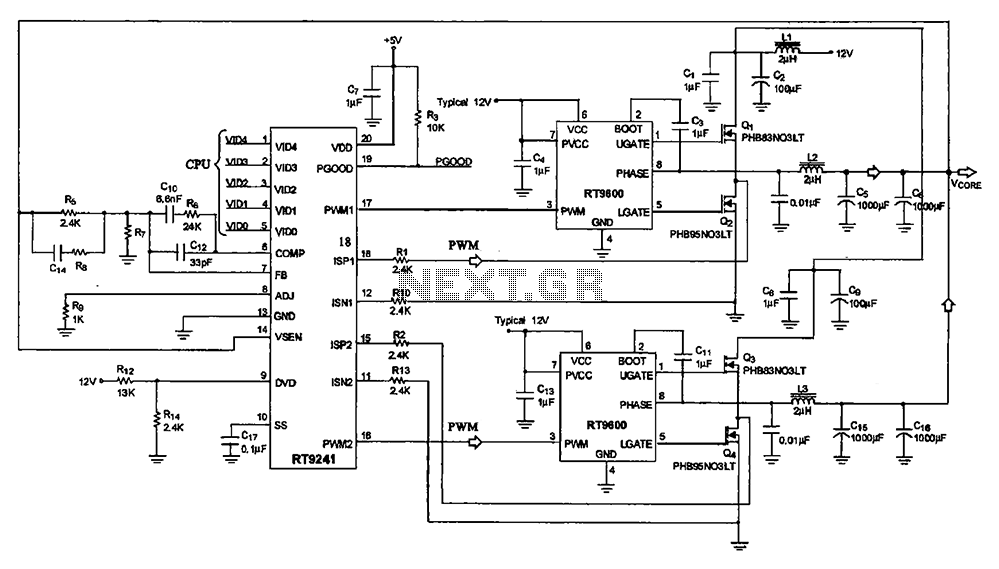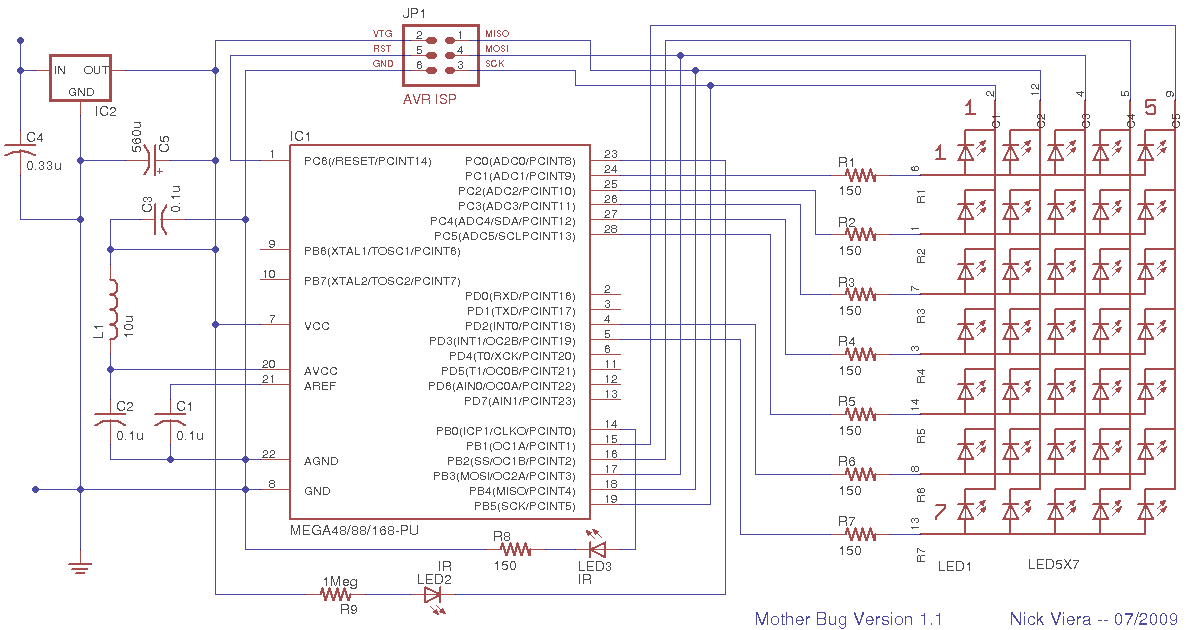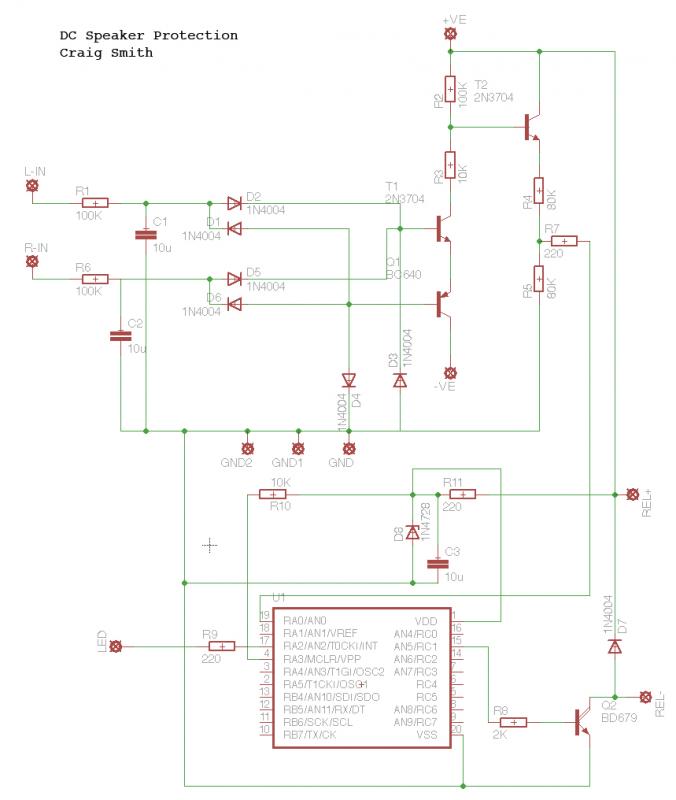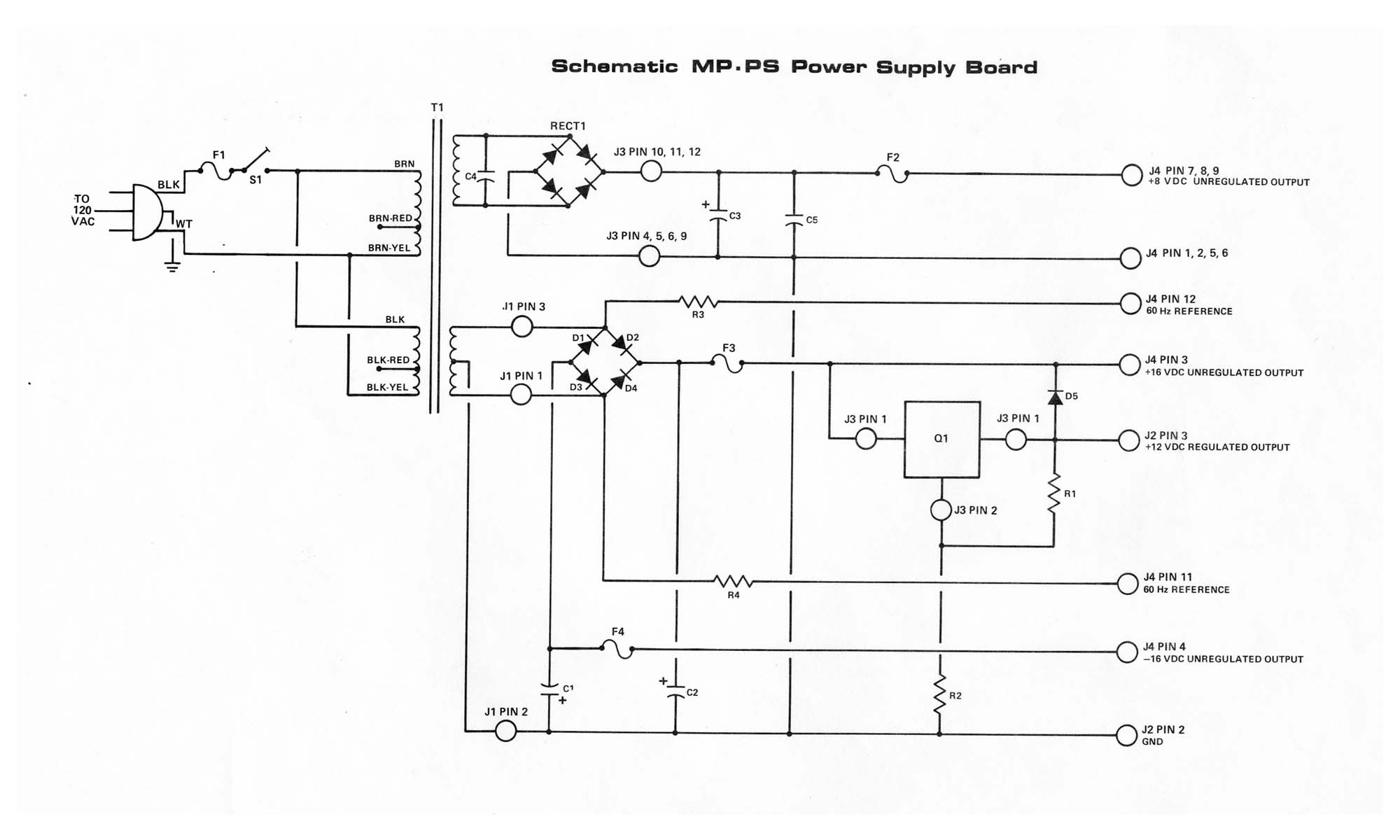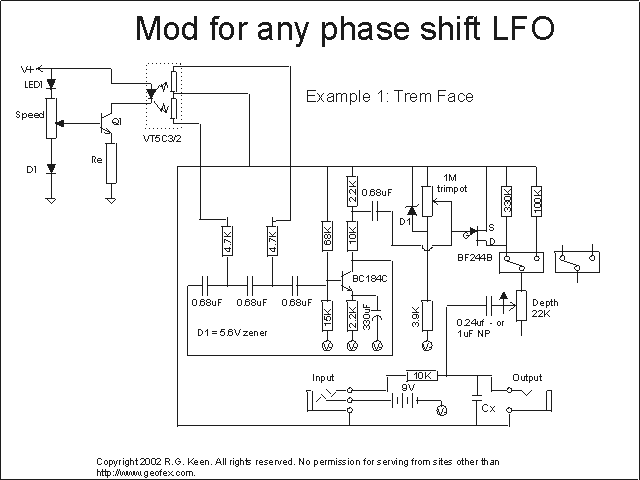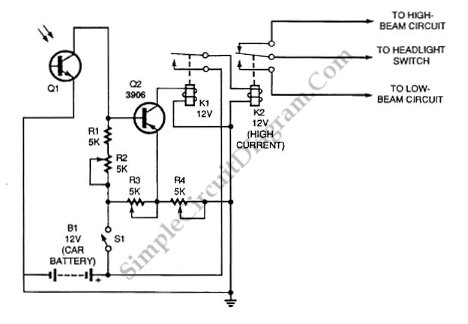
Connecting the PICAXE-08 Microcontrller to other Components
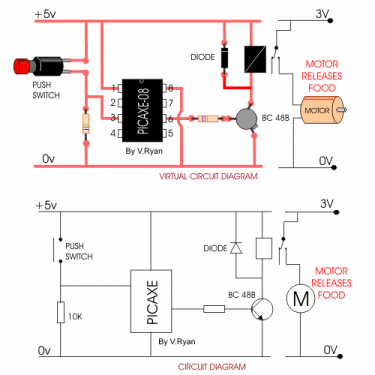
The example circuit is designed for an automatic animal feeder. When the animal activates the switch, the PICAXE microcontroller detects this input. The program within the microcontroller then sends an output signal from pin 6, energizing a relay. This action enables a secondary circuit to activate a motor, which dispenses food into the animal's dish. Additionally, a simple house alarm circuit is required, which must include at least one input. An output should control a relay that activates a buzzer, allowing it to turn on or off.
The automatic animal feeder circuit utilizes a PICAXE microcontroller as the central control unit. This microcontroller is programmed to monitor the state of a switch, which serves as the input mechanism triggered by the animal. Upon detecting the switch activation, the microcontroller sends a high signal from pin 6 to a relay. The relay acts as an electromechanical switch that closes the circuit to a motor, which is responsible for dispensing food. The motor may be a DC motor or a stepper motor, depending on the design requirements. The food dispensing mechanism can be a simple auger or a rotating plate that releases a predetermined amount of food.
The automatic feeder circuit requires a power supply sufficient to operate both the microcontroller and the motor. Typically, a 5V power supply is adequate for the PICAXE microcontroller, while the motor may require a higher voltage, necessitating the use of a relay that can handle the motor's current rating.
For the house alarm circuit, a similar approach is employed. The circuit must include an input device, such as a PIR (Passive Infrared) sensor or a door/window switch. When the sensor detects motion or the switch is triggered, it sends a signal to the microcontroller. The microcontroller processes this input and activates a relay, which in turn controls a buzzer. The buzzer can be a simple piezoelectric buzzer or a more complex sound-generating device, depending on the desired alarm characteristics.
The schematic for both circuits would include the PICAXE microcontroller, the input switches or sensors, the relays, the motors, and the buzzers, along with appropriate power supply connections and protective components such as diodes across the relay coils to prevent back EMF damage. The layout should ensure that the components are clearly labeled, and connections are logically arranged to facilitate understanding and troubleshooting.The example circuit is for an automatic animal feeder. When the animal pushes the switch the PICAXE microcontroller detects an input. The programme within the microcontroller then outputs at pin 6, energising a relay. This allows a second circuit to turn on a motor, releasing food into the animals dish. Draw a circuit diagram for a simple house al arm. The circuit must have at least one input. An output must activate a relay allowing a second circuit to turn on / off a buzzer. 🔗 External reference
The automatic animal feeder circuit utilizes a PICAXE microcontroller as the central control unit. This microcontroller is programmed to monitor the state of a switch, which serves as the input mechanism triggered by the animal. Upon detecting the switch activation, the microcontroller sends a high signal from pin 6 to a relay. The relay acts as an electromechanical switch that closes the circuit to a motor, which is responsible for dispensing food. The motor may be a DC motor or a stepper motor, depending on the design requirements. The food dispensing mechanism can be a simple auger or a rotating plate that releases a predetermined amount of food.
The automatic feeder circuit requires a power supply sufficient to operate both the microcontroller and the motor. Typically, a 5V power supply is adequate for the PICAXE microcontroller, while the motor may require a higher voltage, necessitating the use of a relay that can handle the motor's current rating.
For the house alarm circuit, a similar approach is employed. The circuit must include an input device, such as a PIR (Passive Infrared) sensor or a door/window switch. When the sensor detects motion or the switch is triggered, it sends a signal to the microcontroller. The microcontroller processes this input and activates a relay, which in turn controls a buzzer. The buzzer can be a simple piezoelectric buzzer or a more complex sound-generating device, depending on the desired alarm characteristics.
The schematic for both circuits would include the PICAXE microcontroller, the input switches or sensors, the relays, the motors, and the buzzers, along with appropriate power supply connections and protective components such as diodes across the relay coils to prevent back EMF damage. The layout should ensure that the components are clearly labeled, and connections are logically arranged to facilitate understanding and troubleshooting.The example circuit is for an automatic animal feeder. When the animal pushes the switch the PICAXE microcontroller detects an input. The programme within the microcontroller then outputs at pin 6, energising a relay. This allows a second circuit to turn on a motor, releasing food into the animals dish. Draw a circuit diagram for a simple house al arm. The circuit must have at least one input. An output must activate a relay allowing a second circuit to turn on / off a buzzer. 🔗 External reference
Warning: include(partials/cookie-banner.php): Failed to open stream: Permission denied in /var/www/html/nextgr/view-circuit.php on line 713
Warning: include(): Failed opening 'partials/cookie-banner.php' for inclusion (include_path='.:/usr/share/php') in /var/www/html/nextgr/view-circuit.php on line 713
